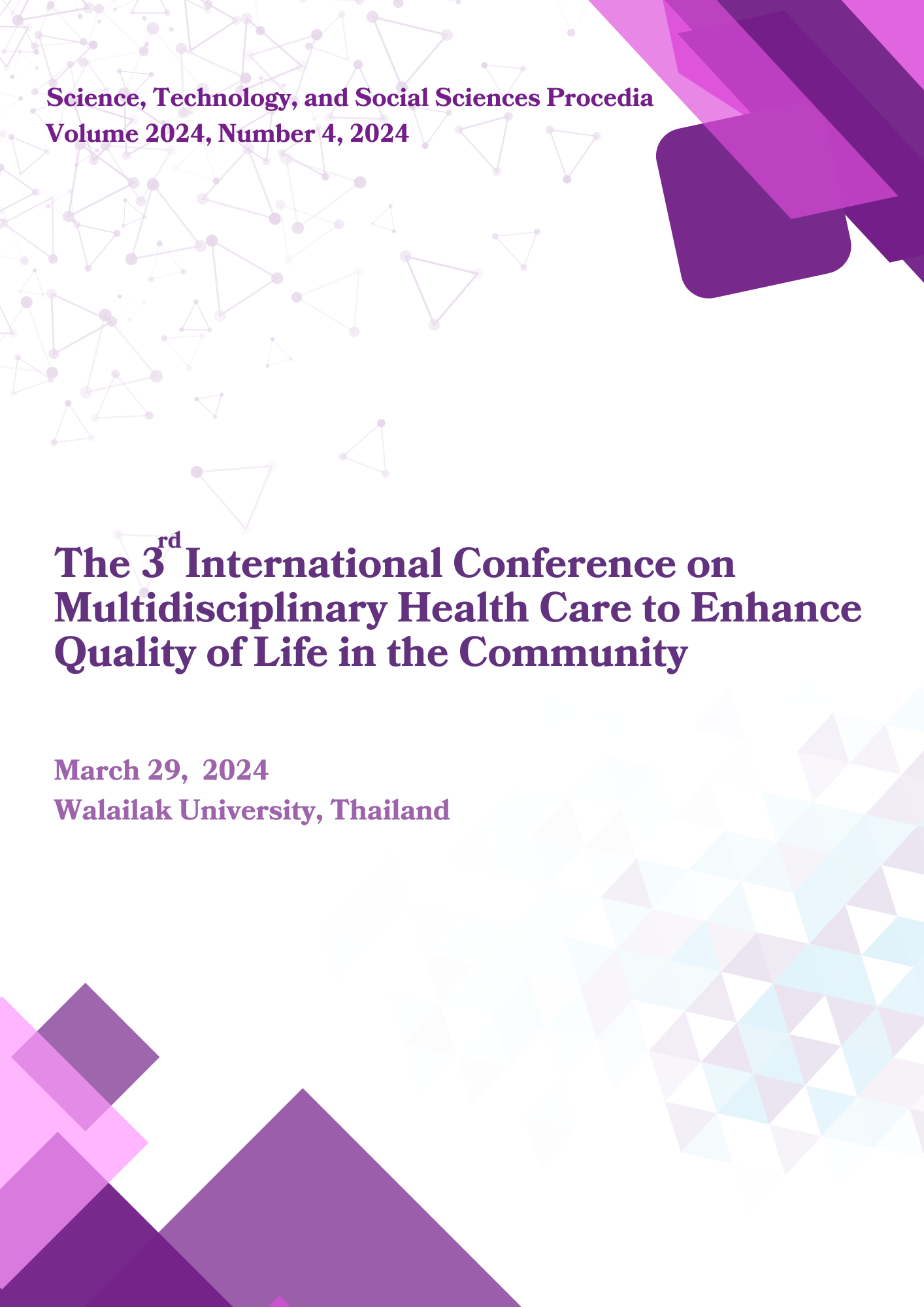Caregivers and Nurses Management before Admission with Sepsis in Older Adults at Surat Thani Province
Keywords:
Caregivers and nurses management, Sepsis, Older adultsAbstract
This descriptive cross-sectional study aimed to investigate the management of elderly care with sepsis prior to hospitalization by primary family caregivers and nurses in primary healthcare settings in Surat Thani Province. A total of 119 caregivers and 34 nurses participated in the study. Data were collected using a validated questionnaire on the management of older adults with sepsis before hospitalization, achieving a CVI of 1.00. Descriptive statistics, including frequency, percentage, mean, and standard deviation, were employed for data analysis. The results revealed that the primary caregivers had a mean age of 46.54 ± 13.00 years. The majority (88.24 %) were unaware of the presence of sepsis in the elderly, and 64.71% did not notify community nurses when caring for affected individuals. Caregivers identified the main contributing factors to sepsis as decreased immunity (36.97 %), unsanitary environments (29.41 %), and poor hygiene practices (15.97 %). Their primary management strategies included symptom management and over-the-counter medication (81.51 %) as well as consulting public health personnel (35.29 %). Among nurses, the average age was 37.12 ± 8.90 years. The mean interval since their most recent home visit was 10.92 ± 7.86 weeks. The primary reasons for home visits included lack of health screening (14.29 %), uncontrolled diabetes mellitus (13.45 %), and at-risk blood glucose and blood pressure levels (12.61 %). Notably, 76.47 % of nurses did not assess sepsis risk. When risk assessments were conducted, they primarily involved monitoring vital signs (89.29 %), followed by blood glucose monitoring in patients with uncontrolled diabetes and wound surveillance (both at 46.43 %). Nurses perceived the leading causes of sepsis to be decreased immunity (48.74 %), environmental factors (36.97 %), and poor hygiene practices (31.09 %). Their management strategies focused on chronic disease management (83.33 %), personal hygiene care (73.81 %), and maintaining environmental cleanliness (66.67 %). Additionally, nurses provided care by evaluating signs and symptoms (90.48 %), recommending medical consultation (85.71 %), and offering education on basic infection prevention (76.19 %). These findings highlight the necessity for targeted training programs to enhance the capacity of both primary caregivers and nurses in sepsis risk assessment, early symptom recognition, and pre-hospital care. Such initiatives are critical to preventing and reducing the severity of sepsis among the elderly population.

